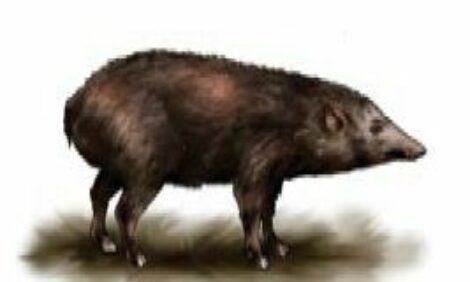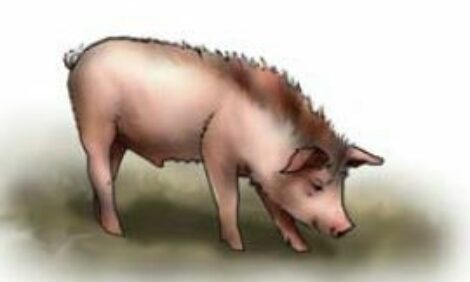



Philippine Native
The Philippine Native pig is either black or black with a white belly. Varieties include Ilocos and Jalajala. The Berkjala, Diani, Kaman, Koronadel and Libtong breeds were all developed from this breed. The Philippine Native is now thought to be extinct.
Breeds developed from the breed have a well-built body, with a coarse, thick, black colour coat with a dispersion of silvery white colour hairs on their sides. Elongated, firm hairs form a top, running down the central point of the back, which is chiefly noticeable in male pigs during their breeding season when it forms a famous mane over their neck and head crest. The average-length tail has a bunch of elongated, black colour hairs at the tail tip, which is used to drive away the flies and to indicate their mood. Usually, the male Philippine Native pig has a longer body and tail than their female counterparts, with the body length, ranging from 49 inches-51 inches (127 cm-129 cm), the female pigs will have a body length between 49 inches-50 inches (124 cm-125 cm).
The Philippine Native Pig breeds occur as two presently recognized subspecies; the Sus philippensis philippinesis, and the Sus philippensis mindanensis. The Sus philippensis philippinesis can be largely seen on the northern islands of Polillo, Luzon, Marinduque and Catanduanes, whereas the Sus philippensis mindanensis pigs are largely found on the east-central islands of Bohol, Biliran, Samar, Leyte, and on the southern islands of Mindanao, Camiguin Sul, and Basilan. These breeds are very prolific; in average the gilts could exhibit signs of sexual maturity as young as 4 to 5 months. The average litter size is four to five piglets, but as many as eight piglets may also be born in one litter. The sows nurse their piglets for three to five weeks. They have a low feed conversion ratio, growing swine reach 60 kilos takes 6 to 8 months fattening period.






